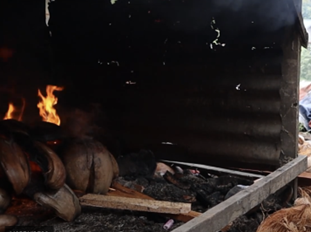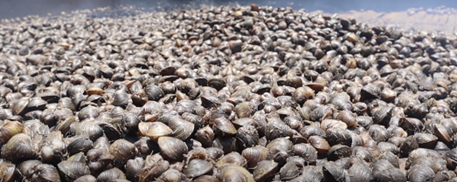ARTS AND CULTURE INFORMATION GATEWAY
Immerse yourself in the colorful world of art and culture! From traditional heritage to contemporary works, discover uniqueness that reflects the nation's identity and identity
ETAK SALAI
Picture
3
Video
No record
Today's Visitor
50
Number of Visitors
1901
Introduction and history
Etak, locally referred to as "etok," is recognized as a heritage food in Kelantan with a rich and unique history tied to the state. For centuries, Kelantanese people from all walks of life, regardless of education, social, or economic background, have enjoyed smoked etak. Today, roadside stalls selling etak are commonly found across the floodplain areas of Kelantan, particularly in Kota Bharu, Pasir Mas, Tumpat, and Bachok.
Scientifically known as Corbicula fluminea, this species of Asian clam, illustrated in Figure 1, is typically harvested from sandy and muddy riverbeds. It thrives in brackish water, where rivers meet the sea, in Malaysia and other parts of Asia.
The ingredients for etak salai are:
Etak (small freshwater clams)
Ginger
Lemongrass
Shallots
Garlic
Fenugreek
Salt
Sugar
Reference Source
Bahan Bacaan
Hassan, N. H., & Abdullah, R. (2015). Warisan Hidangan Tradisional Pantai Timur. Kuala Lumpur: Dewan Bahasa dan Pustaka.
Zain, M. I. (2018). Rasa dan Tradisi: Hidangan Melayu Asli. Shah Alam: Penerbit Universiti Teknologi MARA.
Azman, A. (2020). Makanan Warisan Kelantan: Dari Dapur ke Meja. Kota Bharu: Pustaka Kelantan
Yaacob, M.R., Hamzah, Z. Rak, A.E., Zakaria, M.N., Ismail, M., Rahim, R.M.A., Nuh, R., Hassan, F. & Khalique, M. (2021). “Etak Salai”, The Heritage Food Of Kelantan–Consumers’ Consumption And Buying Behaviours. Academy of Entrepreneurship Journal, 27(4), 1-9.
Tokoh (jika ada temu bual tokoh)
Location
State JKKN Contact Information
Encik Wan Mohd Rosli bin Wan Sidik
Cultural Officer
Jabatan Kebudayaan dan Kesenian Negara, Kelantan
Kompleks JKKN Kelantan
Lot 1993, Seksyen 49,Tanjong Chat,
15200, Kota Bharu,
KELANTAN DARUL NAIM
09-741 7000











